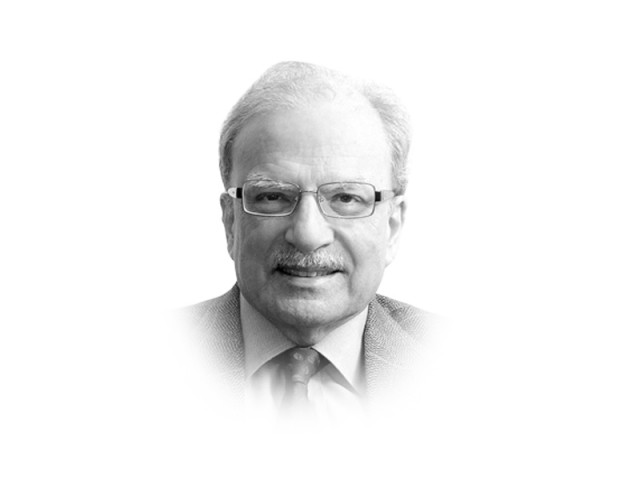Breaking from the past: the Pakistan Tehreek-e-Insaf
Social sectors, along with agriculture are the two priority areas for PTI, as mentioned in their manifesto.

The writer is a former caretaker finance minister and has served as vice-president at the World Bank
In the many public statements Imran Khan has made in the several large meetings he has addressed, much more was revealed about the party’s intentions than we get from its manifesto, the shortest of the three produced by the mainstream political parties. Social sectors, along with agriculture, are the two priority areas for the party. It proposes to increase the proportion of investment on education from 1.5 per cent of GDP to five percent. However, it is not clear over what period this increase would materialise and what will be the source of the increase in government’s financial support. Given the party leader’s interest in hospital care — he is the spirit behind the establishment of the Shaukat Khanum Cancer Hospital and Research Centre in Lahore — it is not surprising that institutional health care receives prominence in the manifesto. To pay for this care, the party promises to “introduce low-cost health insurance schemes and concessional health care schemes for the elderly and the poor.”
The PTI manifesto is the only one among the three issued by the major parties that has a detailed programme for developing the country’s well-endowed agricultural sector. It will address the main problems that have kept both land and labour productivity much lower than should be the case given the sector’s potential. “Investment in agriculture is the quickest and surest way for rapid economic recovery and reducing poverty as its accounts for 25 per cent of the GDP and employs 45 per cent of the country’s labour force”, says the manifesto. However, the manifesto maintains that “agriculture cannot just be viewed as a source of food. Gross agricultural production in Pakistan can be increased two to three-fold by an efficient, scientifically planned use of the existing resources. It requires relatively simple innovations and would depend mainly on more efficient management of the complex agriculture enterprise.” This is defined as improved crop modeling, strengthening of agricultural institutions, introduction of urban agriculture, harnessing of additional resources and “developing of agriculture climatology”.
It is not clear over what period of time the promised doubling and tripling of output of agriculture would take place. If we suppose this were to happen over a period of 10 years, it implies a rate of growth of almost 12 per cent a year in agricultural output. If this were to be realised and if the output of the service sector was to increase at the rate of five per cent and that of industry by seven per cent a year, Pakistan’s GDP could grow at the rate of eight per cent a year. If these rates of increase did occur, they will result in a fundamental change in the structure of the Pakistani economy. The share of agriculture will increase to 35 per cent of GDP while that of the service sector will decline to 47 per cent and of industry to 18 per cent. This restructuring would reposition Pakistan as a major agricultural economy, once again becoming the source of food and industrial raw materials for all of South Asia. This was the case before the Indian trade embargo of 1949. With the likely easing of relations with its neighbour, this restructuring may make Pakistan more competitive in some of the areas in which it has potential to do well in the Indian markets.
The party places much greater emphasis on the creation of a structure of local government that would bring government closer to the people. It favours the introduction of what the Indians call the panchayati raj which presumably would become the lowest tier of a multi-tiered system. The party is critical of the system of local government introduced by the administration of General (retd) Pervez Musharraf. It believes that too much power was placed in the hands of the Nazims without building a system of accountability that would provide a check on the way these functionaries exercised authority.
Considerable amount of attention is given in the manifesto to improving the quality of the people serving in various parts of the government. It wants to have the members of the various services chosen on the basis of competitive examinations, given fixed tenures when they reach senior levels in the structure of government, and provided constitutional protection in order to protect them from political influence. These reforms will also help in addressing the problem of poor governance and corruption. According to the manifesto, “corruption is endemic in our society because it flows from the top. A major reason for this is the centralisation of authority in the hands of the top administration officials”. The PTI promises a number of institutional changes in the system of accountability that is currently in place.
The PTI manifesto, in sum, is designed to win the hearts and minds of the Pakistani youth who constitute 40 per cent of the 2013 electorate. We will know on May 11 whether that approach worked for the PTI.
Published in The Express Tribune, April 22nd, 2013.















COMMENTS
Comments are moderated and generally will be posted if they are on-topic and not abusive.
For more information, please see our Comments FAQ